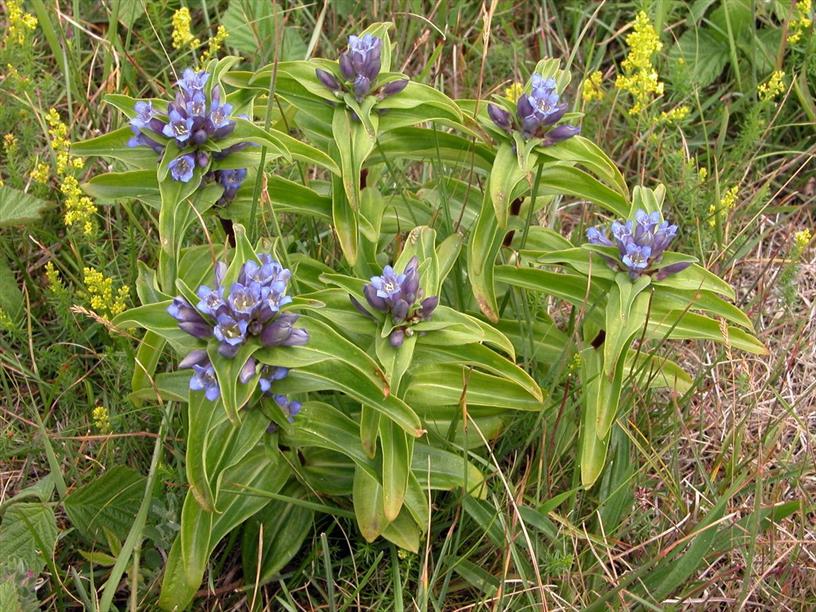Cross Gentian
Gentiana cruciata
Gentian family (Gentianaceae)
A special, magical tool
This very rare species bears blue flowers from June to August and prefers full sun.
Once the star gentian was highly regarded as a medicinal plant, which probably accounts for its local decline in the past.
It gets its name entirely from the leaves arranged in a crosswise fashion.
This star shape, which can also be seen in the root, is the reason behind many folk laws and beliefs. The star gentian was thought to help against poison, the plague as well heartbreak: “dig up the root on Johannis day with a coin. At sunrise place the roots under the altar cloth of a priest, who must know nothing of it. He must hold three services over it. Then you will have a very special and magical tool.”
All gentian species are known for their incredibly bitter taste due to the number of glycosides they contain such as amarogentin, gentianmarin, gentiopicrin, and gentin. Frisians added this plant to their herbal drink -Beerenbug.
Read more.... »Themes
During the last century a separate subspecies of the Alcon blue butterfly, the Dutch Alcon blue, was discovered. This lived on the star gentians in Meijendel and the marsh gentian along the Meije near Nieuwkoop but this butterfly is now extinct.
The star gentian was once highly regarded as a medicinal plant, which probably accounts for its local decline during the past.
All gentian species are known for their incredibly bitter taste due to the number of glycosides they contain. In Friesland this plant is added to the preparation of their herbal drink, Beerenbug.
This plant gets its Dutch name (cross-leaf gentian) and English name from the leaves, which are arranged in a crosswise, or star, fashion. This star shape, which can also be seen in the root, is the reason behind many folklaws and beliefs. The star gentian was thought to help against poison, the plague as well as heartbreak.
All gentian species are known for their incredibly bitter taste due to the number of glycosides they contain. In Friesland this plant is added to the preparation of their herbal drink, Beerenbug.
Details
| Description: | Herb, up to 0.45 m. |
|---|---|
| Distributions: | Europe to west siberia and the caucasus |
| Habitat: | Dunes, on dry, calcareous sand mainly on (north) slopes, sometimes in chalk grassland. |
| Year cycle: | Perennial (trees and shrubs included) |
| Hardiness: | Colder than -4 f (very hardy) |
| Flowering period: | Juni - augustus |
| Flower color: | Blue |
| Notes on flowers: | Bell-shaped flowers with four blue petals, the throat of the corolla is white with blue spots. |
| At its best: | Juni - augustus |
